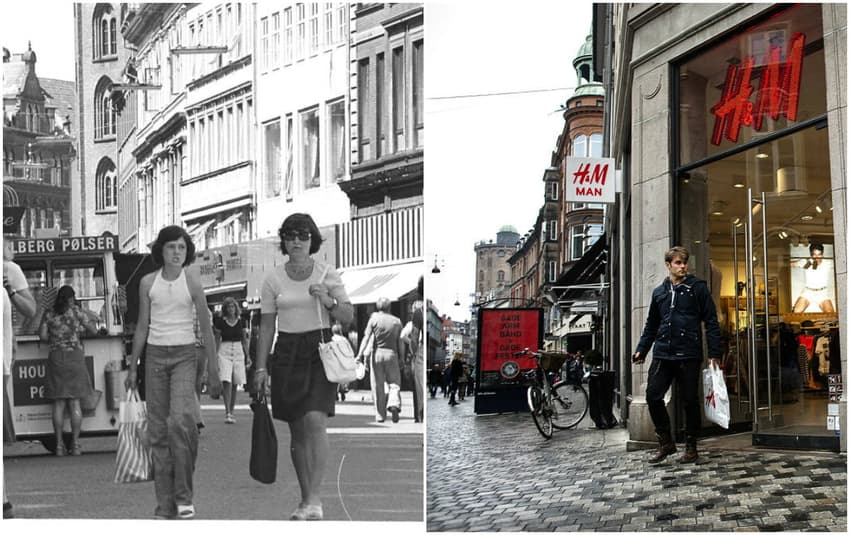Photos of Denmark in the 1970s – and how the same places look today

How much has Denmark's appearance changed since the 1970s?
We've scoured the archives to find historical photos from the era, taken at locations now found on Google Maps.
Vesterbro, Copenhagen, 1977
This 1977 image shows the Føtex supermarket on Vesterbrogade in Copenhagen.

Photo: Knud Henrichsen / Ritzau Scanpix
A photo from the same area in 1976 is evidence of changes at the Værnedamsvej junction.

Photo: Svend Aage Mortensen / Ritzau Scanpix
Tivoli, Copenhagen, 1970
A new building is constructed at the Tivoli amusement park site in 1970.

Photo: Henning Petersen / Ritzau Scanpix
Aarhus Rail Station, 1970s
This undated photo shows the central rail station in Aarhus, probably some time during the 1970s.

Photo: Bent K. Rasmussen / Ritzau Scanpix
Dragør, 1979
The fishing village of Dragør near Copenhagen is a popular spot for a summer day out.

Photo: Ulf Nilsen / Ritzau Scanpix
Nørrebro Station, Copenhagen, 1975

Photo: Steen Jacobsen / Ritzau Scanpix
Shopping, 1976
Central Copenhagen shopping street Købmagergade in 1976. The Round Tower, a famous sight in the city, can be made out in the background.

Photo: Kurt Petersen / Ritzau Scanpix
READ ALSO: 10 photos of Denmark in the 1950s and 1960s – and the same spots today
Comments
See Also
We've scoured the archives to find historical photos from the era, taken at locations now found on Google Maps.
Vesterbro, Copenhagen, 1977
This 1977 image shows the Føtex supermarket on Vesterbrogade in Copenhagen.

Photo: Knud Henrichsen / Ritzau Scanpix
A photo from the same area in 1976 is evidence of changes at the Værnedamsvej junction.

Photo: Svend Aage Mortensen / Ritzau Scanpix
Tivoli, Copenhagen, 1970
A new building is constructed at the Tivoli amusement park site in 1970.

Photo: Henning Petersen / Ritzau Scanpix
Aarhus Rail Station, 1970s
This undated photo shows the central rail station in Aarhus, probably some time during the 1970s.

Photo: Bent K. Rasmussen / Ritzau Scanpix
Dragør, 1979
The fishing village of Dragør near Copenhagen is a popular spot for a summer day out.

Photo: Ulf Nilsen / Ritzau Scanpix
Nørrebro Station, Copenhagen, 1975

Photo: Steen Jacobsen / Ritzau Scanpix
Shopping, 1976
Central Copenhagen shopping street Købmagergade in 1976. The Round Tower, a famous sight in the city, can be made out in the background.

Photo: Kurt Petersen / Ritzau Scanpix
READ ALSO: 10 photos of Denmark in the 1950s and 1960s – and the same spots today
Join the conversation in our comments section below. Share your own views and experience and if you have a question or suggestion for our journalists then email us at [email protected].
Please keep comments civil, constructive and on topic – and make sure to read our terms of use before getting involved.
Please log in here to leave a comment.